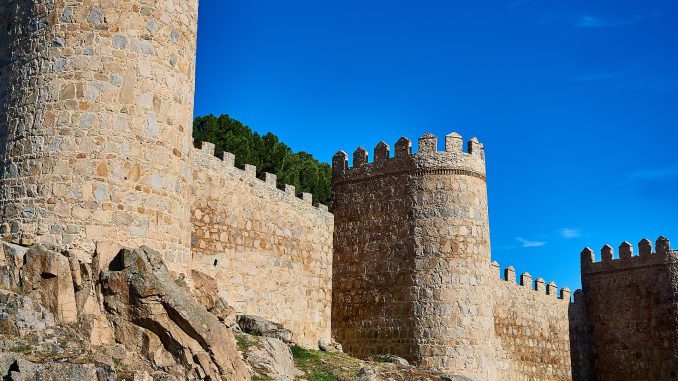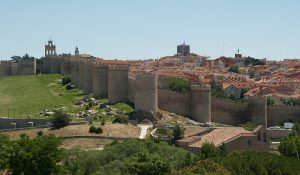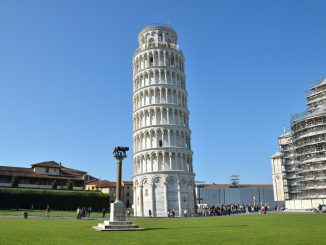
The Walls of Ávila, in central Spain are a well known and widely recognized symbol of the city, and it is highly likely that they are the main reason Ávila is one of the most well preserved medieval enclosures in the world. Built primarily in the 11th and 12th centuries, they are the most complete and vast military fortification in the entirety of Spain. The more than 2,500 meters of 12 meter high wall enclose roughly 31 somewhat irregular hectares and include 88 semicircular towers and 9 gates.

The walls have made it to modern times in a seemingly well preserved state, but it is actually the result of a great deal of refurbishment and restoration over many years. Most of the restoration has followed period correct guidelines and this practice has maintained the appearance of the original work. Because of the wonderful restoration work and the continued care of the wall, it is possible for tourists to walk on the walls for roughly 1,700 meters. The other portion of the wall will likely never be walkable for safety reasons.
Ávila Facts
- Ávila is the capital of Castile-Leon, and is one of the few circumstances where the entire city is a World Heritage site.
- St. Teresa was a Carmelite nun who lived in Ávila from 1515 to 1582. She is famous for writing devotional poems dedicated to Jesus and was canonized 12 March 1622
- The town of Ávila was sacred to an ancient Celt Iberian culture well before the arrival of the Romans.
- The Walls of Ávila were registered as a National Monument in 1884, and a mere 101 years later in 1985 were declared, along with the churches a UNESCO World Heritage site.
- The 2,500 meters of walls are fortified by 88 large stone towers.
- The Moors captured the city in 714 AD and it was recaptured by the Christians in 1088. This back and forth led to the building of the walls in the 12th century.
- Before Ávila became the tourist destination it is today, it was a site for religious pilgramage.
- The current church, begun in 1091 and completed in the 13th century, is where the mystic St. Teresa prayed. Nearby the church stands the house where St. Teresa lived.


